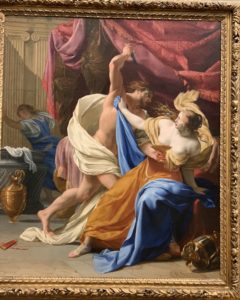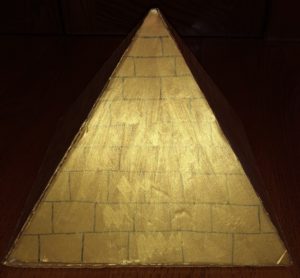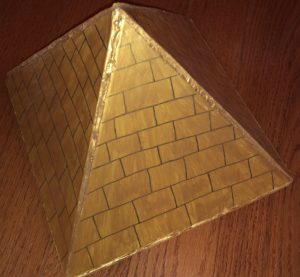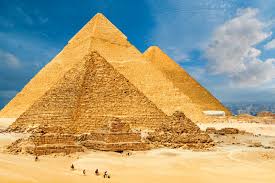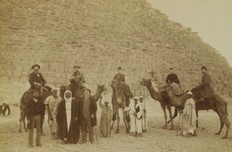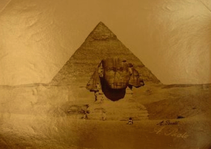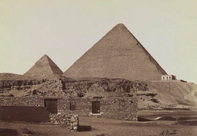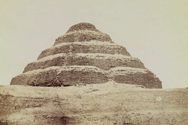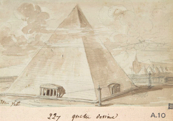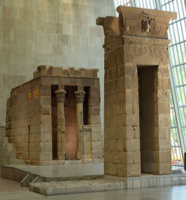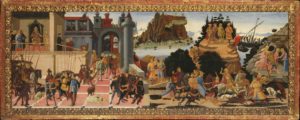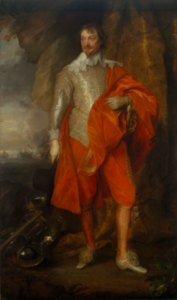Theme: Humanism of the Gods and Goddesses in Greco-Roman Art
Thesis Statement: These works of art illustrate the value of humanity as something that is not to be belittled through its humanized representation of its very own gods, something not common in other depictions of gods throughout the span of human art.
Image List:
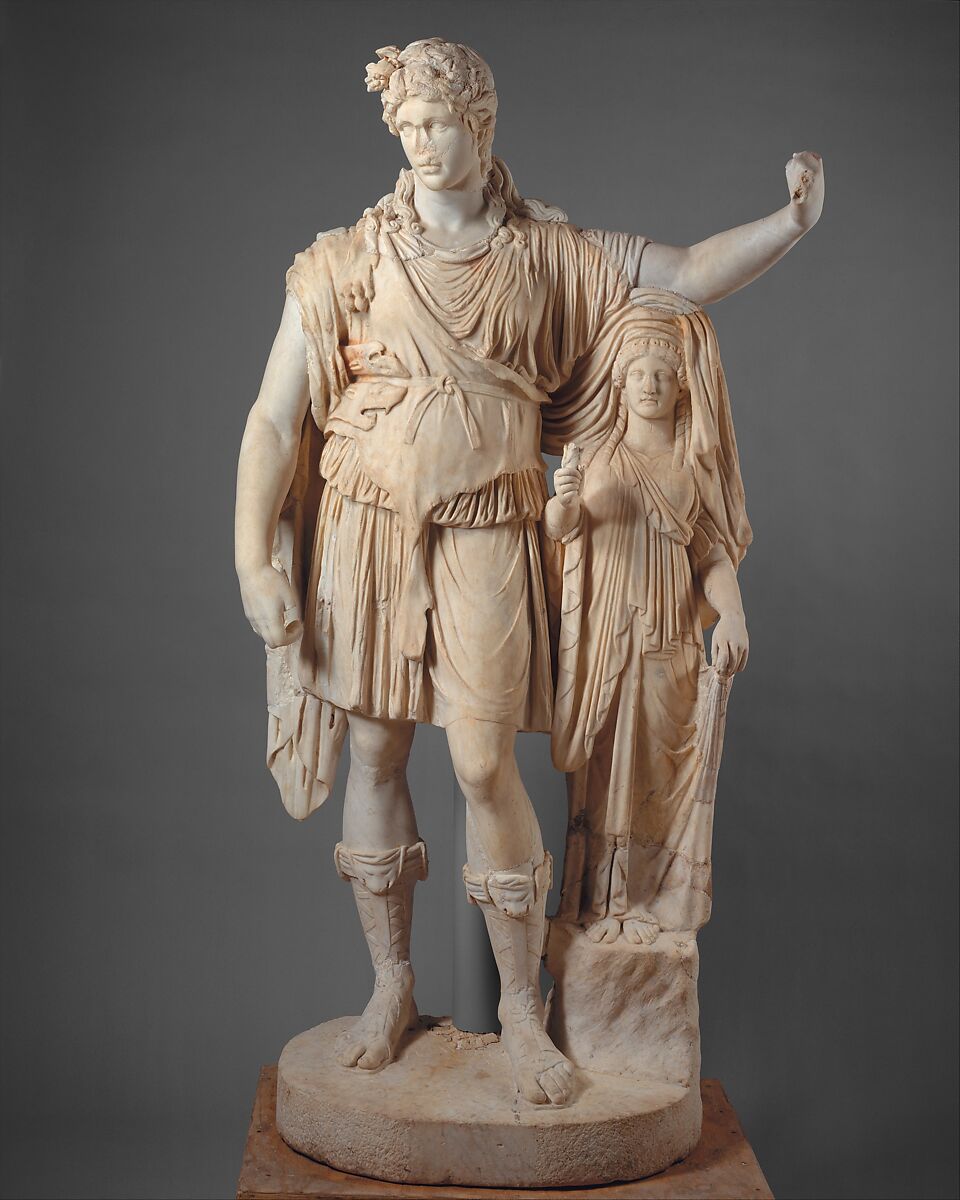
Title: Statue of Dionysos leaning on a female figure (“Hope Dionysos”)
Artist: Restored by Pacetti, Vincenzo
Date: 27 B.C.–A.D. 68
Museum: Metropolitan Museum of Art
How It Relates To My Project: This god is portrayed as having very anatomical human features. He holds himself as a human male would when showing off his strength. His head tilt and bent knee show that his body functions the way a human’s would, so the humanism is clear here.

Title: Marble head of a goddess
Artist: unknown
Date: 4th century BC
Museum: Metropolitan Museum of Art
How It Relates To My Project: This goddess looks very human in her bored or irritated expression. She is shown as having human emotions, and as reacting to such emotions in an utterly human way. The humanism is her carved features is present as well.

Title: Bronze statue of Eros sleeping
Artist: unknown
Date: 3rd–2nd century BC
Museum: Metropolitan Museum of Art
How It Relates To My Project: This artwork highlights how Eros, the god of sensual love and desire, is illustrated in a completely human stance. Most gods, at this time, and, even still today, would not be interpreted as sleeping. Yet, here is one of the Greco-Roman gods sleeping in a way that looks so characteristically human.

Title: Marble head of Athena
Artist: unknown
Date: ca. 200 BC
Museum: Metropolitan Museum of Art
How It Relates To My Project: This work makes humanism in her facial structures very visible. She has a human emotion on her face, of a slightly surprised disgust. Her head is caught in a motion of turning that looks very characteristic of a human turning their head to look at something.

Title: Eros Stringing His Bow
Artist: Lysippos (Greek original); Roman copy artist unknown
Date: 2nd Century AD
Museum: Onassis Cultural Center
How It Relates To My Project: This artwork highlights how Eros is, yet again, taken down to an almost human stance. He stands like a human would when stringing a bow as he is doing. He does not look ‘god-like’ when he strings his bow; he looks like an average human doing this. His body moves in a human fluidity, and the specific carvings also illustrate humanism.
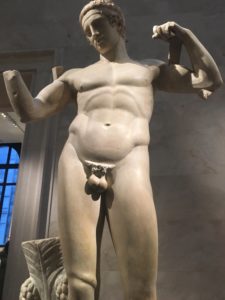
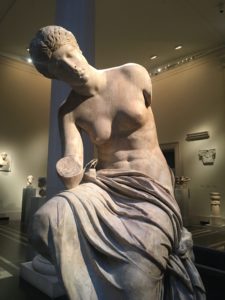
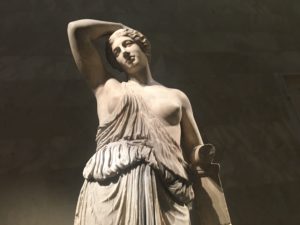
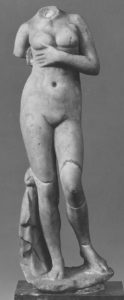
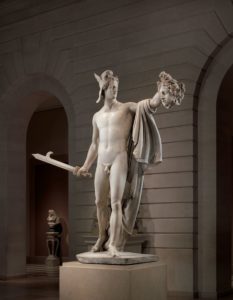
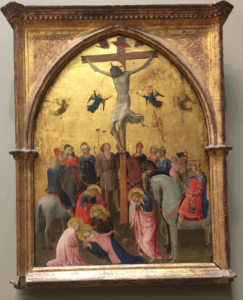 For the Renaissance era I used Fra Angelico’s “The Crucifixion,” dated to the 1420s. This is a great example of Renaissance art because it focuses on a violent religious event, however, the artist manages to make the scene appear delicate. The picture depicts Christ crucified on the cross with people surrounding him and angels in the background. Some of the men appear to be holding spears that have caused the wounds on Christ. There is blood coming out Christ’s chest, but true to Renaissance qualities even that appears still and light, like the other hues of red in the painting that are also light. Even the Virgin Mary passed out on the floor lacks the dramatic chaos of what would be seen if this were to be a Baroque painting.
For the Renaissance era I used Fra Angelico’s “The Crucifixion,” dated to the 1420s. This is a great example of Renaissance art because it focuses on a violent religious event, however, the artist manages to make the scene appear delicate. The picture depicts Christ crucified on the cross with people surrounding him and angels in the background. Some of the men appear to be holding spears that have caused the wounds on Christ. There is blood coming out Christ’s chest, but true to Renaissance qualities even that appears still and light, like the other hues of red in the painting that are also light. Even the Virgin Mary passed out on the floor lacks the dramatic chaos of what would be seen if this were to be a Baroque painting.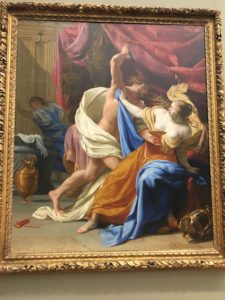 painting that caught my attention because of what was being shown. Although there are only three people in the painting, it seems like there is a lot happening. At the forefront is a man with a dagger held high, aimed at a woman with her breasts peeking out of her disheveled dress. Both of their faces show fear, which adds to the mayhem surrounding them. True to Baroque era qualities, there is real sense of dramatic disorder, especially upon looking into the context of the story which is one of a man named Amnom- the son of David- raping his half-sister. This action in the painting is illustrated through the running maid in the background, the vases scattered on the floor, and the flying sheets and clothes. Despite being a painting, there is no stillness to the painting and the audience can practically feel the urgent emotions that are being shown.
painting that caught my attention because of what was being shown. Although there are only three people in the painting, it seems like there is a lot happening. At the forefront is a man with a dagger held high, aimed at a woman with her breasts peeking out of her disheveled dress. Both of their faces show fear, which adds to the mayhem surrounding them. True to Baroque era qualities, there is real sense of dramatic disorder, especially upon looking into the context of the story which is one of a man named Amnom- the son of David- raping his half-sister. This action in the painting is illustrated through the running maid in the background, the vases scattered on the floor, and the flying sheets and clothes. Despite being a painting, there is no stillness to the painting and the audience can practically feel the urgent emotions that are being shown.